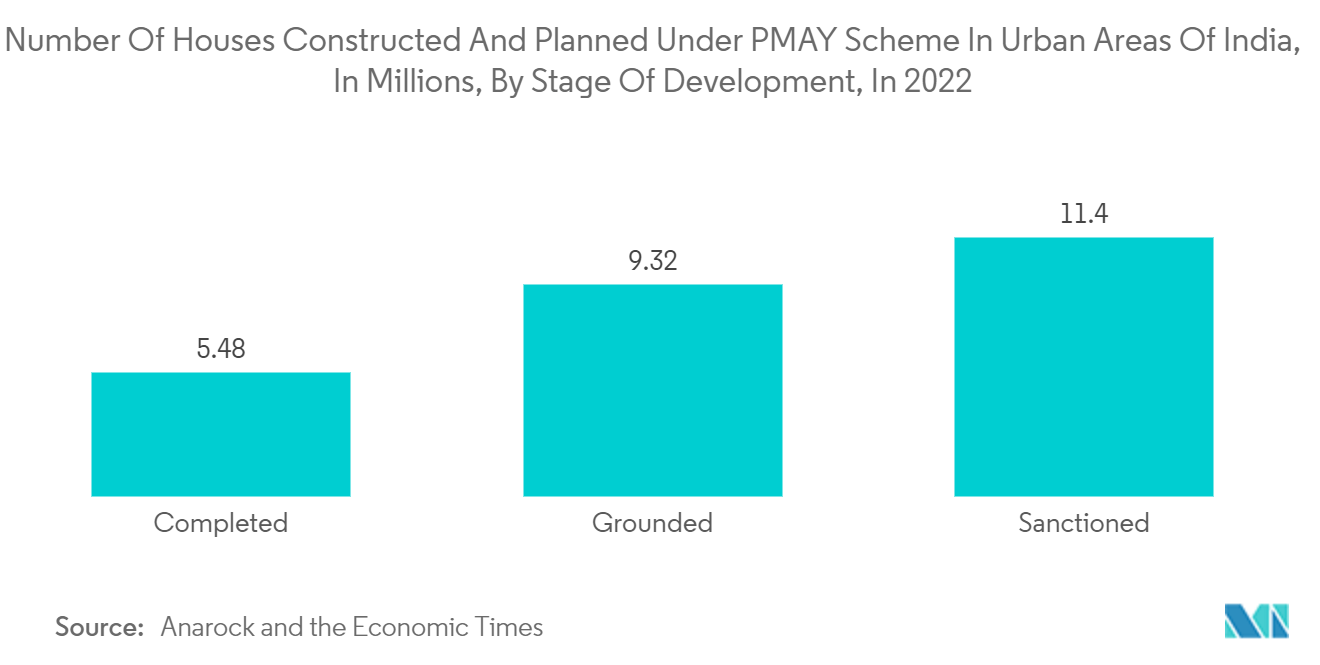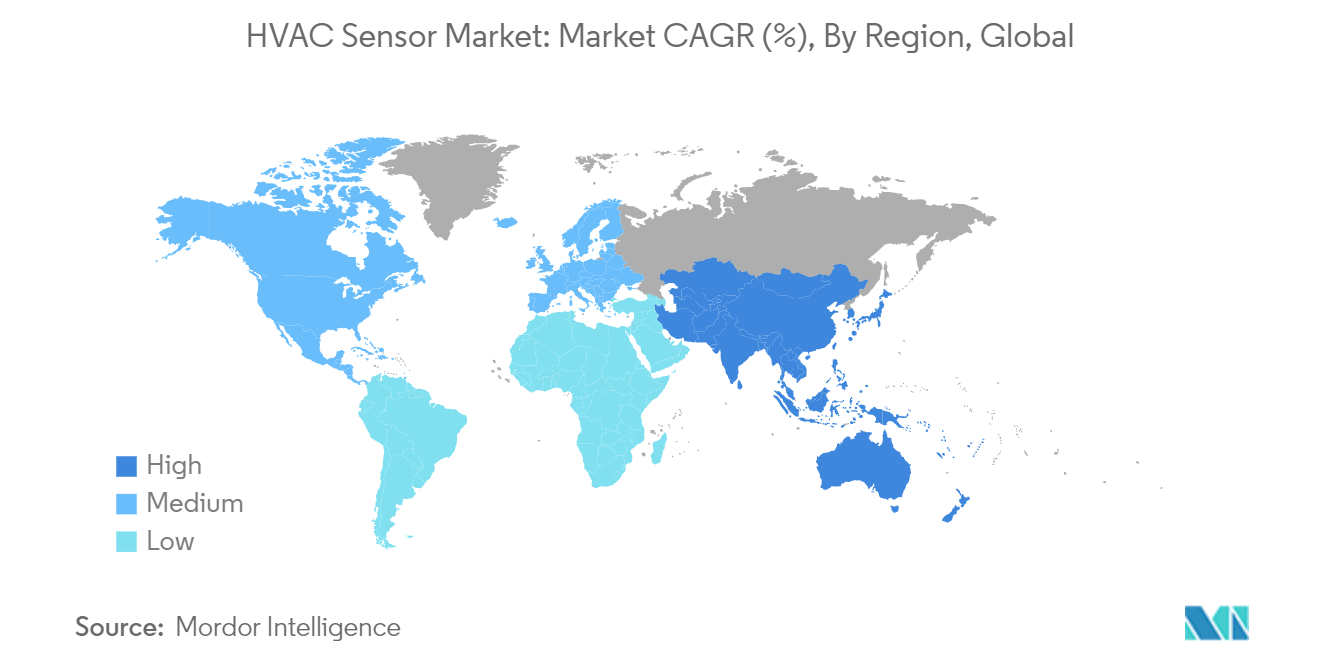Market Trends of HVAC Sensor Industry
Increased Construction and Retrofit Activity to Aid the Market's Growth
- According to JRAIA, the global demand for room air conditioners has increased to 95.16 million in recent years. Furthermore, according to the United Nations, the world's population was projected to reach 8 billion on November 15, 2022. The latest projections by the organization suggested that the global population could reach around 8.5 billion in 2030, 9.7 billion in 2050, and 10.4 billion in 2100. Declining levels of mortality partly influence population growth.
- Furthermore, in emerging markets like the Asia Pacific region, especially China and India, many people have been migrating from rural areas to cities, raising government and private spending on housing, commercial construction, and infrastructure. New building construction is creating significant demand for new equipment installations for heating, ventilation, and air conditioning systems. Hence, the growing construction industry would likely drive the studied market.
- For instance, in November 2021, the Indian government approved the construction of 3.61 lakh houses under the Pradhan Mantri Awas Yojana (Urban). The approval of the new housing units takes the total number of sanctioned houses under the scheme to 1.14 crore. Such trends positively contribute to the demand for HVAC sensors, in newly installed HVAC systems.
- Moreover, increasing building renovation projects by the government to make them more energy-efficient are significantly increasing the global HVAC sensor market. This is because energy-efficient buildings can help reduce greenhouse gas emissions, lower energy bills for homeowners and businesses, and improve indoor air quality, thus making them suitable for public health.
- Moreover, a country like Europe has presented the European Green Deal, an ambitious package of policy measures to make Europe the first climate-neutral continent by 2050. The European Green Deal aims to double or even triple building renovation rates and speed up building digitization to ensure the EU's building stock is on track to decarbonize by 2050.
- Therefore, with the growing construction and retrofit activities, there will be a significant rise in the demand for energy-efficient HVAC sensors for maintaining comfortable indoor temperatures and good air quality in buildings, owing to the need to reduce energy consumed, increasing and leading to the enhancement of energy and its efficiency.

Asia-Pacific Expected to Register Fastest Growth
- The Asia-Pacific HVAC sensor market is predicted to rise steadily due to commercial and residential construction activity in India and China and rising consumer expenditure on luxury products. Low ownership rates and increased disposable income in Asia will likely boost the market's growth. Due to rising demand from India and China, the residential sector accounted for a significant portion of the Asia-Pacific HVAC sensor market.
- According to the China Construction Industry Association, in 2021, residential structures accounted for the largest share of finished construction in China. Buildings intended for housing accounted for over 67 percent of the completed floor space. As the country's economy grows, people migrate from rural areas to major cities, increasing demand for residential accommodation in these locations. Furthermore, apartments utilized as investment properties drive up demand. Such huge residential construction is expected to drive the studied market.
- Besides, the increase in commercial buildings is estimated to affect national energy consumption directly, so the Chinese government has seriously considered energy management. Two laws, the Energy Saving Law and the Renewable Energy Law, provide the main guidelines for building energy systems and the HVAC and R industries.
- The players in the region are developing new products to capture market share. For instance, in March 2022, Voltas unveiled India's first AC with HEPA filter technology. Voltas' PureAir 6 Stage Adjustable Inverter AC is embedded with a PM 1.0 air quality sensor and AQI indicator (an industry first) that helps to purify the indoor air and is also loaded with 6 Stage Adjustable Tonnage Mode, which allows the user to switch between multiple tonnages depending on the ambient heat or number of people in the room. It provides pure and clean air, cost savings, and energy optimization.
- Further, according to RAP (Regulatory Assistance Project), heat pump installations in the country reduced CO2 emissions by 81 million metric tons in 2021. RAP calculated that with every 1% increase in heat pump uptake in China's buildings, an additional 7.1 Mt of CO2 may be avoided each year. Presently, just 3.4% of building area in China uses heat pumps for space heating, indicating a considerable possibility to grow deployment and reduce CO2 emissions countrywide.
- Such estimates encourage the adoption of efficient HVAC sensors in the region. Since IoT HVAC monitoring systems help buildings heat and cool spaces more efficiently, Sensor data can be used to evaluate equipment performance, identify inefficiencies, and create efficiency-focused automation strategies based on a range of variables.
- IoT devices can also monitor elements within an HVAC system, including variable air volume systems and fan coils, to promote energy efficiency. For instance, motion-activated air conditioning systems use sensors that turn themselves off and on based on movement in the home, saving money in the absence of anyone in the home.


